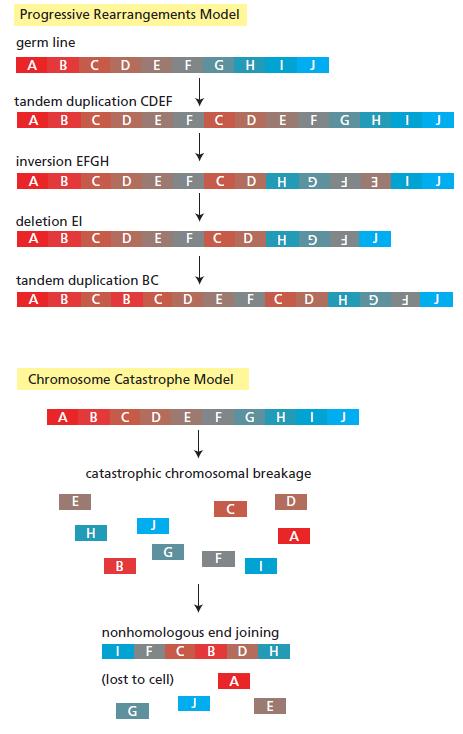A small fraction2 to 3%of all cancers, across many subtypes, displays a quite remarkable phenomenon: tens to
Question:
A small fraction—2 to 3%—of all cancers, across many subtypes, displays a quite remarkable phenomenon: tens to hundreds of rearrangements that primarily involve a single chromosome, or chromosomal region. The breakpoints can be tightly clustered, with several in a few kilobases; the junctions of the rearrangements often involve segments of DNA that were not originally close together on the chromosome. The copy number of various segments within the rearranged chromosome was found to be either zero, indicating deletion, or one, indicating retention.
You can imagine two ways in which such multiple, localized rearrangements might happen: a progressive rearrangements model with ongoing inversions, deletions, and duplications involving a localized area, or a catastrophic model in which the chromosome is shattered into fragments that are stitched back together in random order by nonhomologous end joining (Figure Q20–2).
A. Which of the two models in Figure Q20–2 accounts more readily for the features of these highly rearranged chromosomes? Explain your reasoning.
B. For whichever model you choose, suggest how such multiple rearrangements might arise. (The true mechanism is not known.)
C. Do you suppose such rearrangements are likely to be causative events in the cancers in which they are found, or are they probably just passenger events that are unrelated to the cancer? If you think they could be driver events, suggest how such rearrangements might activate an oncogene or inactivate a tumor suppressor gene.
Figure Q20-2

Step by Step Answer:

Molecular Biology Of The Cell
ISBN: 9780815344322
6th Edition
Authors: Bruce Alberts, Alexander D. Johnson, Julian Lewis, David Morgan, Martin Raff, Keith Roberts, Peter Walter





